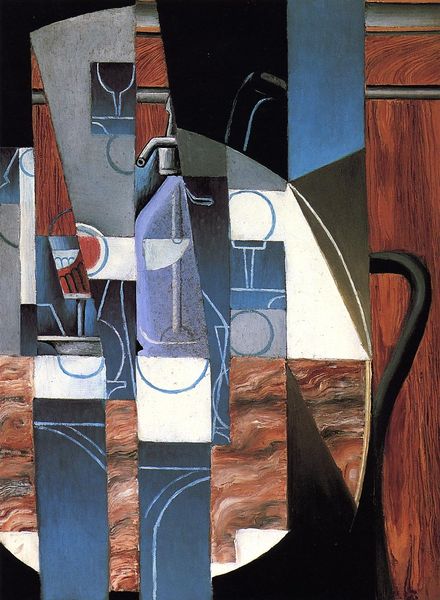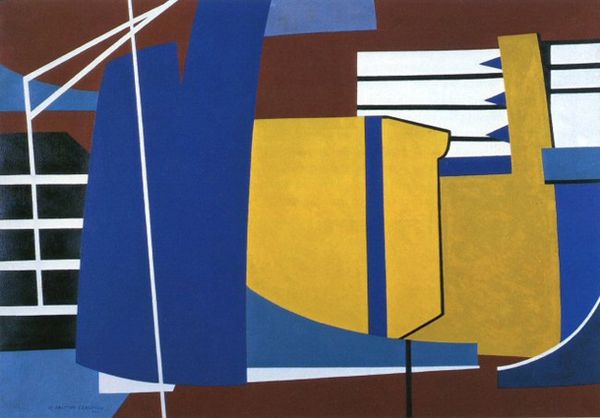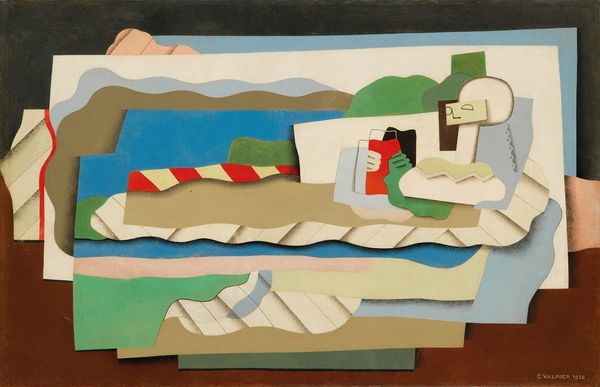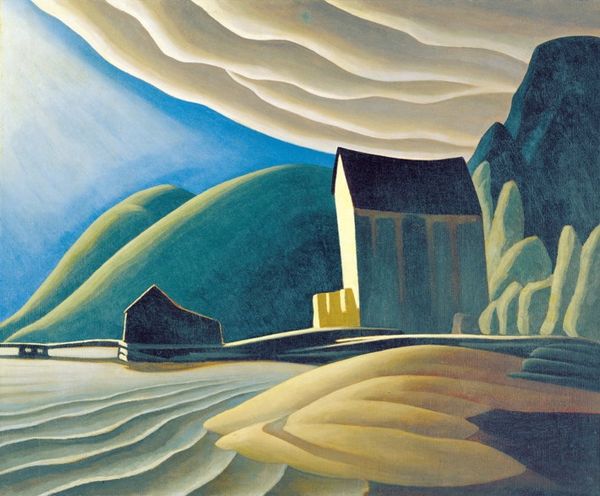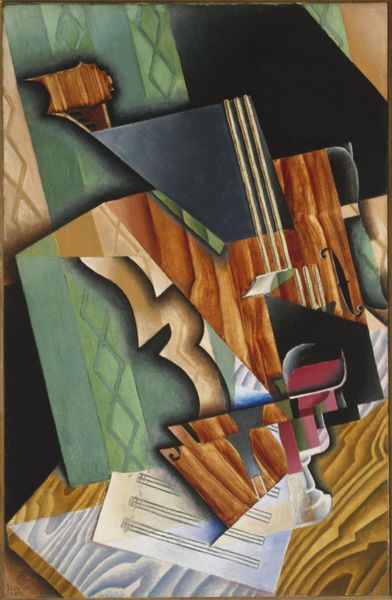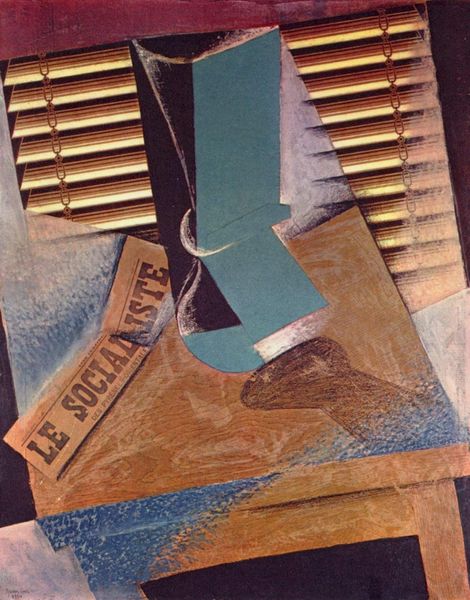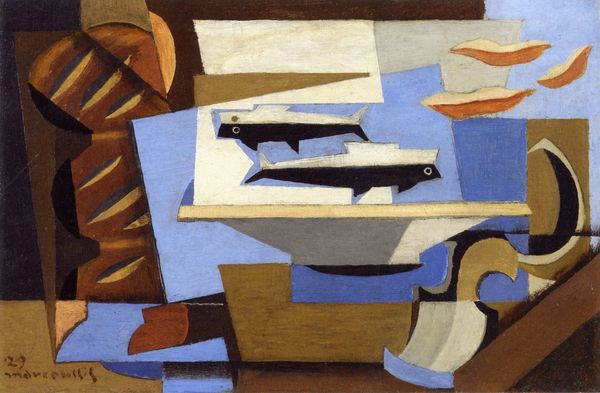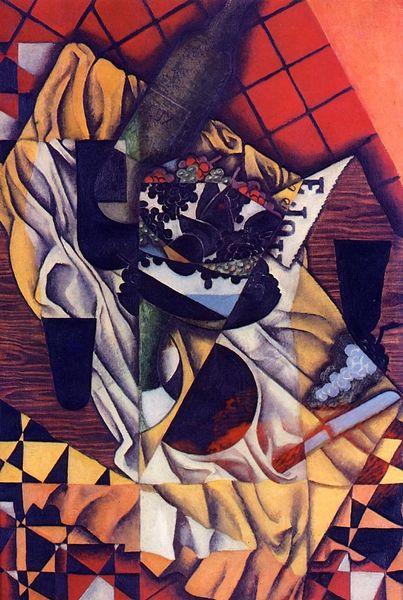
painting, oil-paint
#
cubism
#
painting
#
oil-paint
#
pop art
#
geometric
#
modernism
Dimensions: 65 x 100 cm
Copyright: Public domain
Curator: Juan Gris created this intriguing painting, "View across the Bay," in 1921. It’s oil on canvas, currently residing at the Centre Pompidou in Paris. Editor: Well, my first impression is a curious blend of serenity and disorientation. The cool blues and greys evoke a sense of calm, of looking out at a distant horizon, yet the fractured planes destabilize the familiar. It makes one unsure if they are indoors or out, solid ground or shifting sand. Curator: That push and pull is central to Synthetic Cubism. Gris, following Picasso and Braque, constructed a pictorial space where objects are flattened and reassembled. He breaks down traditional perspective, allowing multiple viewpoints to exist simultaneously within a single frame. Think about the cultural shift happening after the First World War; old certainties are collapsing. Artists are reimagining ways to see, ways to represent a world fundamentally altered by modernity and its technologies. Editor: I notice how many triangular or pyramid-like shapes appear. One so clearly reads as the sail of a boat. Considering triangles symbolize aspiration and enlightenment in various contexts, and a sailboat is often seen as a journey or voyage. Is Gris hinting at something beyond this disrupted reality, some hope for progress? Curator: It's tempting to view such works as a reflection on contemporary society, certainly, yet the recurring motifs point to the market's role, as well. Look how the guitars, newspapers, glasses all become recognizable commodities and emblems of bourgeois leisure. Gris was also an illustrator for magazines early on, so it's not a stretch to see these paintings reflecting back on the business side of art. Editor: Very astute observation. However, focusing solely on commercial elements risks overlooking what else these symbols might signify on a more intimate level. The presence of musical instruments evokes harmony and emotion, hinting at a richer psychological depth beyond consumer culture. Maybe it represents Gris yearning for the idyllic and nostalgic while commenting on cultural norms? Curator: Perhaps so. This particular work of his came about because of time spent recuperating by the sea after a near-fatal illness, which further adds weight to that point. Either way, whether one focuses on commodity or symbolism, these tensions seem intrinsic to its nature and what makes it interesting. Editor: Absolutely. Ultimately, what stays with me is this strange synthesis, the familiar abstracted to prompt contemplation on a culture adrift and our yearning for stability within it.
Comments
No comments
Be the first to comment and join the conversation on the ultimate creative platform.


